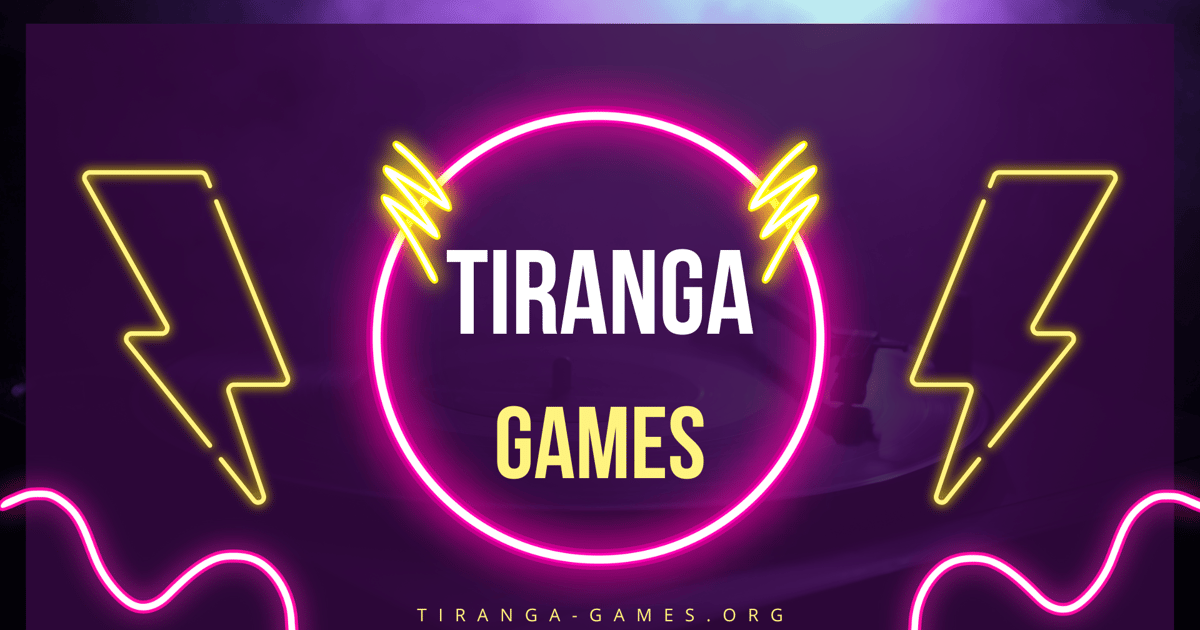India is a land of vibrant culture, unity in diversity, and deep patriotism. One of the most respected and recognized symbols of this patriotism is the Indian national flag, known as the Tiranga, meaning "tricolor". The Tiranga stands for courage, peace, and prosperity—represented by its three colors: saffron, white, and green. But in recent years, the phrase “Tiranga Game” has grown in popularity, particularly during national holidays and in the digital world. It has evolved into a unique blend of celebration, education, and entertainment that connects people to their patriotic roots.

This article explores the meaning and significance of the Tiranga Game, its cultural importance, its role in education and digital platforms, and why it continues to capture the hearts of millions.
What is the Tiranga Game?
The term “Tiranga Game” can have multiple interpretations depending on context:
-
Patriotic Games and Activities: Played in schools, communities, and public celebrations, especially on Independence Day and Republic Day.
-
Mobile or Online Games: Digital games inspired by Indian history, national pride, or tricolor themes.
-
Symbolic Representation: A metaphorical idea representing unity, progress, and national responsibility.
-
Brand Name or App Title: Some gaming platforms use the term "Tiranga Game" as a title to attract Indian audiences.
Each of these interpretations shares a common theme—celebrating the spirit of India.
Tiranga Games in Schools and Communities
One of the most popular uses of the phrase “Tiranga Game” is during national festivals like 15th August (Independence Day) and 26th January (Republic Day). Across the country, schools and communities organize events that include various tricolor-themed games and competitions.
Popular Tiranga-Themed Games:
-
Tiranga Relay Race: Participants carry the national flag and pass it like a baton in a relay, symbolizing teamwork and unity.
-
Tricolor Art and Craft: Children create artwork using only the three colors of the flag, expressing their love for the country through creativity.
-
Patriotic Quiz or Trivia: Questions related to India's freedom struggle, constitution, and leaders are asked in a fun quiz format.
-
Flag-Hoisting Simulations: Kids play roles of leaders and soldiers, acting out scenes from the independence movement.
These games do more than entertain. They teach patriotism, history, cooperation, and respect for the nation. For young students, such games are a first step toward understanding the values behind the Tiranga.
Tiranga in the Digital World
With the growing popularity of smartphones, the Tiranga Game has taken on a digital avatar. Several mobile apps and web-based games now feature patriotic content. These games are often launched around national holidays and attract millions of users across India.
Features of Digital Tiranga Games:
-
Puzzle Games with tricolor themes or flag-building elements.
-
Freedom Fighter Missions, where players act as Indian heroes like Bhagat Singh or Rani Laxmibai.
-
Flag Hoisting Challenges, where players complete levels to earn the right to hoist the Tiranga.
-
Educational Quizzes about India's history, monuments, and constitutional rights.
These games offer an engaging way for both children and adults to learn about India's heritage. While being entertaining, they also build awareness and appreciation for the sacrifices made for India's freedom.
However, users must ensure that these games respect national symbols. According to the Flag Code of India, the Indian flag must be displayed with dignity and honor. Using the Tiranga in games should not be done casually or in a disrespectful manner.
Tiranga Game as a Metaphor
Beyond literal games, the “Tiranga Game” can also be seen as a symbolic challenge faced by every Indian citizen—to protect, uphold, and live the values the flag represents.
In this metaphorical Tiranga Game:
-
Saffron stands for the courage to fight injustice.
-
White represents the need for peace, honesty, and unity in a diverse society.
-
Green encourages progress, development, and harmony with nature.
Every Indian plays this game daily—by making ethical choices, helping others, respecting the law, and working toward a better future. The real victory in the Tiranga Game is a strong, united, and inclusive India.
Tiranga Game as a Brand or Platform
It's also worth noting that some apps and platforms now use the name “Tiranga Game” for marketing purposes, especially in the online gaming or fantasy gaming space. These platforms may or may not be directly related to patriotic themes. Some even promote money-based or betting games under the name.
Important Note:
While using patriotic branding might attract users, it is essential for such platforms to follow legal and ethical standards. The Prevention of Insults to National Honour Act, 1971, makes it clear that the national flag and its name should not be used for commercial gain or disrespectful purposes.
Conclusion
The Tiranga Game is more than just a phrase—it is a celebration of India's identity. Whether played in a schoolyard, on a smartphone, or lived out through everyday actions, the Tiranga Game reminds us of our duty, pride, and unity as Indians.
It brings together the power of play and the power of patriotism. As we salute the flag and celebrate our nation, let's remember that every honest act, every kind gesture, and every effort to improve our country is a win in the Tiranga Game.
Jai Hind. Vande Mataram.






